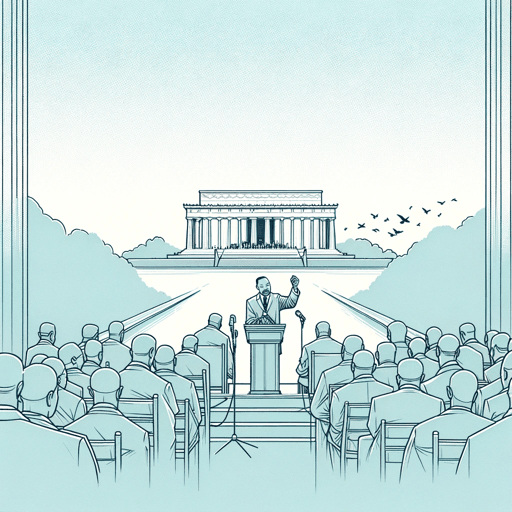68 pages • 2 hours read
Martin Luther King Jr.Why We Can't Wait
Nonfiction | Book | Adult | Published in 1964A modern alternative to SparkNotes and CliffsNotes, SuperSummary offers high-quality Study Guides with detailed chapter summaries and analysis of major themes, characters, and more.
Introduction-Chapter 1Chapter Summaries & Analyses
Introduction Summary
King opens his introduction with two images: an African-American boy from Harlem and an African-American girl in Birmingham, both of whom would have been living in poor conditions. In 1963, these children would have wondered why African-Americans lived in such misery, if their African-Americans ancestors “had done some tragic injury to the nation” or not taken on the responsibility of fighting for liberty during the nation’s founding (xii).
King then contrasts the school history taught to such children and what these children would have known about actual American history. He gives examples of historical African-American figures such as American Revolutionary soldiers, Crispus Attucks, Benjamin Banneker, and the nameless slaves who built the nation’s infrastructure, wealth, and world dominance: “Wherever there was hard work, dirty work, dangerous work…Negroes had done more than their share” (xiii). The “pale history books” used to teach these children would have mentioned the Civil War and the Emancipation Proclamation, but the status of African-Americans would have made it obvious that racial equality still had not been achieved (xiii).
These children would also have been aware of the current events of 1963, including the wave of decolonization on the African continent, the exclusion of African-Americans from public spaces like restaurants because of discriminatory segregation laws, employment discrimination in the nation’s capital, and Southern states’ defiance of Supreme Court rulings that struck down segregationist laws.
Related Titles
By Martin Luther King Jr.

A Testament of Hope
Martin Luther King Jr.

I Have A Dream Speech
Martin Luther King Jr.

I've Been to the Mountaintop
Martin Luther King Jr.

Letter From Birmingham Jail
Martin Luther King Jr.

Stride Toward Freedom
Martin Luther King Jr.

